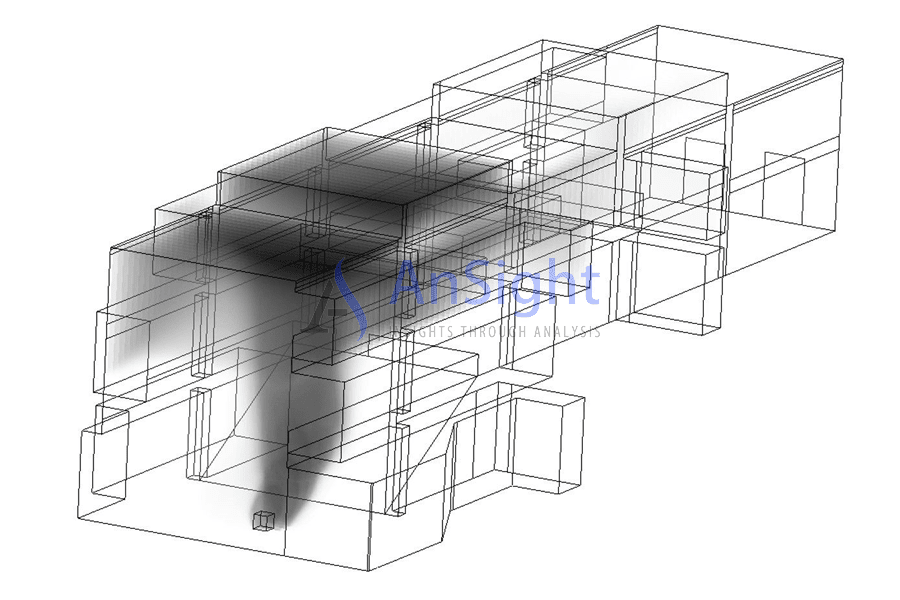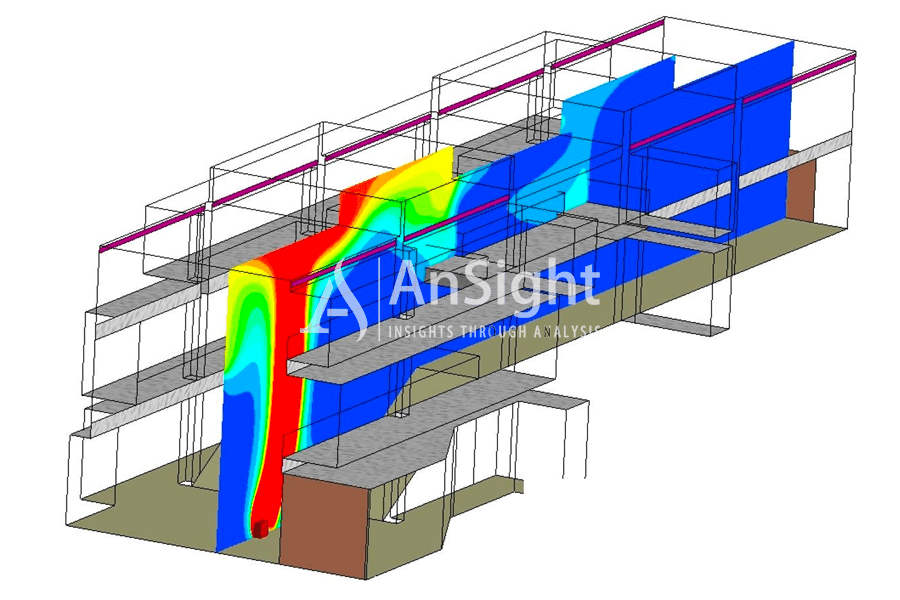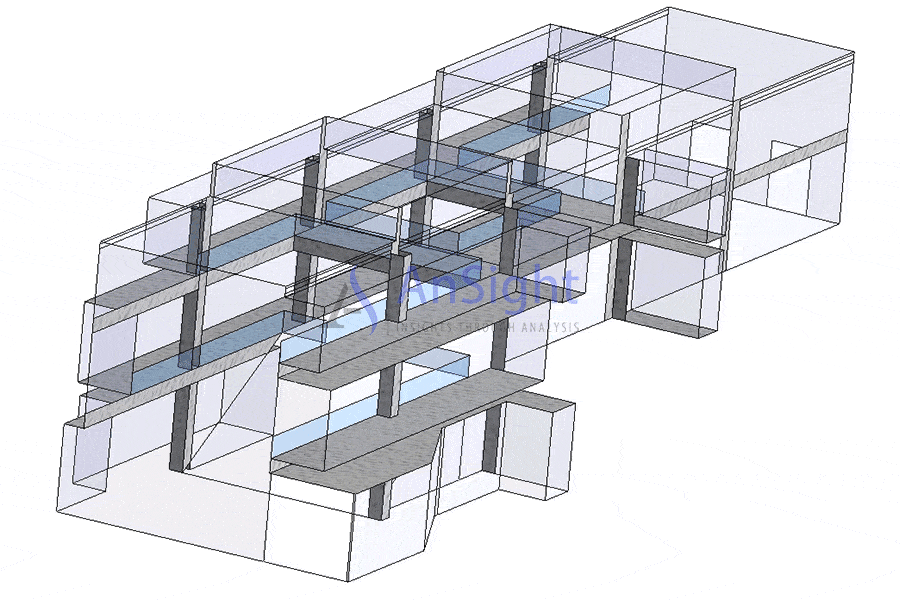Computational Fluid Dynamics (CFD) Analysis of Smoke Exhaust Systems
Several factors can affect smoke dilution and visibility. These factors include the size and location of the fire, exhaust fan capacity, placement of exhaust grilles, locations and number of makeup air openings, and space height and layout.
Our proprietary CFD analysis procedures help our clients to optimize the performance of the atrium smoke exhaust system as well as stairwell and elevator shaft pressurization. Our analyses predict smoke temperature, the concentration of toxic gases, and visibility.
AnSights into Smoke Exhaust Systems




We provide insights into
- Effectiveness of smoke exhaust systems for atria.
- Optimization of the smoke exhaust airflow rates.
- Airflow patterns and temperature in the space.
- Three-dimensional map of smoke concentration.
- Visibility analysis under various fire scenarios.
- Stairwell and elevator shaft pressurization.
- Optimization of the pressure and supply airflow rate to meet the requirements of the local building codes.
- Optimization of location and number of the injection points for the makeup air for stairwell and elevator shaft pressurization.
Looking for CFD services for Smoke Exhaust Systems?
We have several years of experience in providing optimized solutions for a wide variety of engineering problems involving fluid flow, heat transfer, mass transfer, and other similar engineering processes. If you are looking for an expert who can provide you the right solution with the expert CFD knowledge, feel free to contact us.
